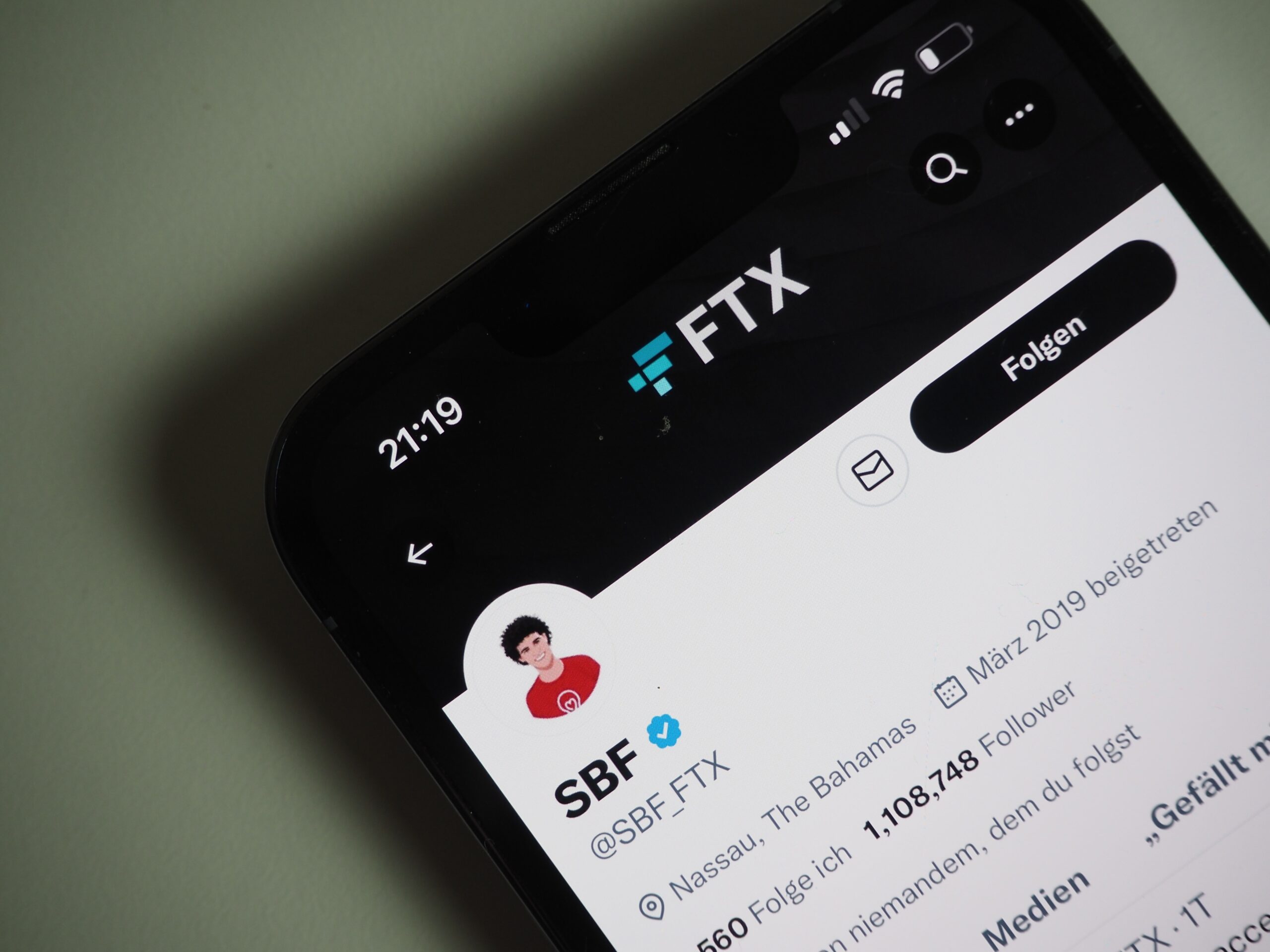What Is GPU Mining? – All You Need To Know

Cryptocurrency mining entails using computers to solve complex cryptographic problems in exchange for cryptocurrencies. The type of mining is determined by the computing resources utilized to solve these difficult cryptographic equations.
Mining utilizing the computational power of ASIC, a central processing unit, is the most basic kind of crypto mining (CPU). Today, however, mining bitcoins with a GPU (graphics processing unit) is also available.
What Is GPU Crypto Mining?
Graphics processing units (GPUs) are computer processing units made up of electronic circuits that are more efficient and robust than the CPU equivalents. These units are employed to solve complex math riddles to validate blocks on blockchain and get rewards in form of cryptocurrencies. ETH, XMR, LTC, and DOGE are some of the coins that may be mined.
Mining using GPUs offers both benefits and drawbacks. Let’s take a closer look at these to see if and when it’s a good idea to be using your GPUs to mine Cryptocurrency.
GPU mining is the latter stage in the mining history (the first was CPU mining), and it’s quite helpful in the learning process. We think that each miner should experiment with GPU mining to see how different parameters affect the speed and performance of GPU mining.
The Hash Function SHA-256
Information of e payments and methods essential to protect a blockchain system from hackers intending to “double-spend” are encrypted in SHA-256 problems handled by computer systems. Miners are compensated with cryptocurrencies for contributing to the blockchain network’s cybersecurity.
When the mining card solves a computational equation, the result is a hash, which appears to be a random 64-character output. Miners on the Btc network must acquire a hash that begins with around seventeen zeros. A computer must try numerous times to obtain this number.
The block is shut once the hash is discovered, and the pool of miners is rewarded with newly minted BTC and transaction fees. The hashing rate is the rate at which the miners arrive at a hash on any blockchain. Giga hashes per second (GH/s) is the unit of measurement for hash rate.
Algorithms For GPU Mining
The following are the hashing algorithms that support GPU mining.
- Algorithm SHA-256:
The crypto hash algorithm, generally known as SHA-256, is a cryptography algorithm. A 512-bit messaging block and a 256-bit intermediary hash rate are used in SHA-256 algorithms. The SHA-256 algorithm’s hash rate is defined in Giga hashes per second (GH/s).
A 32-byte (256-bit) signature for text strings is the result of mining the SHA-256 algorithm. The duration of the block ranges from 6 to 10 mins. The SHA-256 algorithm is used in BTC, BCH, TRC, and PPC.
- Scrypt Algorithm:
Litecoin (LTC) uses the Scrypt hashing algorithm as a substitute to the more power-demanding SHA-256 algorithm. This algorithm is much faster to solve than the SHA-256. The Scrypt algorithm’s hashing rate is computed in kilo hashes per second (KH/s)
Scrypt is built on Colin Percival’s password-based key operations, which he designed for the Tarsnap online storage service. This approach generates a large number of pseudorandom numbers for storage in RAM, making large-scale hardware assaults on a network nearly difficult.
Scrypt was initially used in crypto by an unknown coder named ArtForz in Tenebrix, followed by Fairbrix and Ltc.
For many cryptos, the Scrypt function takes 2.5 minutes to generate a block. As a response, they can be carried out on computers’ GPUs.Other cryptos built on the Scrypt algorithm include DOGE, LAT, and BTM.
- Algorithm X11:
For GPUs, that’s the most power-efficient mining algorithm. The X11 Algorithm allows GPUs to consume 30 percent less power. This algorithm is implemented using a series of 11 hashing algorithms in PoW blockchains.
In 2014, Evan Duffield used this technique in the Darkcoin network (later rebranded to Dash) in order to make it resilient to ASIC mining. The X11 Algorithm’s hash rate is expressed in mega hashes per second (MH/s). DASH, START, CANN, and XC are some of the digital currencies that employ the X11 algorithm.
- Ethash Algorithm:
Ethereum (ETH), the cryptocurrency for which the Ethash Algorithm was developed, is 2nd most valuable cryptocurrency after Bitcoin. The initial edition of the Ethash algorithm, DaggerHashimoto, was built by Vitalik Buterin and the Eth developers to be ASIC resistant.
DaggerHashimoto is a hybrid method that combines 2 existing algorithms. The Dagger algorithm was created as a replacement for memory-intensive algorithms such as Scrypt. In distributed-memory hardware acceleration, Dagger is vulnerable to pressure. By being IO-bound, the Hashimoto algorithms were developed to be ASIC resistant.
The DaggerHashimoto algorithm’s hashing rate is expressed in mega hashes per second (MH/s). Ethereum, Ethereum Classic, and Expanse are among the most well-known cryptocurrencies dependent on it.
What to Mine With GPU?
One of the most difficult tasks for new miners is deciding which crypto to mine with GPUs. Among the most commonly asked topics during the decision-making process has been how much money can be made mining cryptocurrency with GPUs.
Before GPU mining can begin, the program must be designed on a blockchain system that enables proof-of-work (PoW). Different elements, like block rewards, influence how much money one can gain from GPU.
A pool of miners receives a block reward when they complete a block of cryptocurrency algorithms on a chain. When Bitcoin first began in 2009, mining a single block would reward you 50 BTC. In 2012, however, the blockchain reward was reduced to 25 BTC. By 2016, it had been cut in half again, at 12.5 BTC. Finally, the reward was half to 6.25 BTC in May 2020.
The greatest cryptocurrencies to mine are ones that payout enough in rewards to cover the cost of power and the mining rigs.
The Best Cryptocurrency to Mine with GPU
The following are some of the top cryptocurrencies to mine with a GPU in 2022.
- Litecoin (LTC)
The network is ideally adapted for GPU mining because Ltc was one of the early adopters of the Scrypt technology. Because Ltc employs the SCRYPT system, it can be processed without an ASIC. The network also offers low-cost, high-speed transactions. You get 12.5 LTC after completing a block. As of February 2022, the value of Litecoin is $131.5.
- Bitcoin Gold (BTG)
This is among the few cryptocurrencies designed with GPU mining in consideration. The architecture has been meticulously optimized for GPU mining. It’s also among the few non-stablecoin cryptocurrencies with fairly consistent pricing.
Bitcoin Gold uses the Zhash hashing process and rewards mined blocks with 12.5 BTG. As of February 2022, a BTG is worth 35.58 USD.
- Grin (GRIN)
Grin is a new coin with a large block reward. Although the difficulty of mining on the Grin network varies, it is quite simple, and the project delivers endless cash – a delight for miners. Each block mined earns you 60 GRIN. As of February 2022, a grin coin is worth 0.1783 USD.
Comparison Between ASICs And GPU Mining Rigs?
If you want to start mining cryptocurrency, you could be debating whether to purchase an ASIC miner or construct your GPU mining setup. There are numerous points of assessment between the two, each with its own set of advantages and disadvantages. Let’s take a closer look at each of them. What are the limitations of ASICs and GPUs in terms of mining?
The currency you wish to mine is the primary thing you should think about. ASICs are custom-built devices that have only one purpose: to mine cryptocurrency. GPUs and other mining technologies have no effect on the effectiveness of the equipment. However, that advantage is not without its drawbacks.
ASICs are designed with a single objective in mind: to maximize output and efficiency. As a result, these powerful systems can generate a huge amount of hash rate, but only for 1 algorithm.
GPU mining setups are modular. They rely on reused or replaceable general application hardware. The ease with which they may be updated, modified, and replaced makes them more suitable for mining nearly any proof-of-work crypto.
The disadvantage of GPU mining is that it produces far less hash rate and is far less efficient. In high-difficulty systems like BTC or LTC, these machines can’t compete with ASICs.
Even if they can theoretically mine their method, the hash rate GPU mining equipment produces under several complexity parameters is so small that it’s basically useless.
- Hash Rate Output
Without a doubt, ASICs are the most powerful cryptocurrency mining machines. By incorporating these powerful machines into your mining operation, you will be able to stay 1 step ahead of other lone miners.
GPU mining rigs, on the other hand, can’t compete with ASICs in terms of hash rate, and pointing to any PoW network with a high mining complexity is pointless.
- Energy Consumption And Efficiency
This one goes to the ASICs once more. Keep in mind that ASIC miners are designed to provide a greater hash rate while using less energy. Their key benefits are their hash rate output and power efficiency.
GPU mining, on the other hand, relies on basic units that are incapable of achieving such power optimization. In comparison to ASICs, they require more power and generate less hash rate.
- Maintenance And User-Friendliness
Constructing a mining rig needs careful planning, analysis, and selection of the appropriate components, as well as their assembly at a suitable site. These components, particularly graphic cards, require meticulous care and maintenance. They determine your rig’s hash rate and effectiveness.
This, on the other hand, does not have to be a terrible thing. Many people mine cryptocurrency as a hobby and love the process of developing a mining rig from beginning to end.
ASICs are a lot easier to install and use. They’re completely set up so you can plug them in and start mining right away. They, too, require routine maintenance and cleaning, although it’s far less difficult than with a GPU mining machine. The maintenance of ASIC miners is essential for maximizing performance and extending their lifespan.
- Adaptability And Flexibility
GPU mining machines begin to balance the scales at this point. ASIC miners do not have any repurpose abilities. Their sole purpose is to mine a singular algorithm. Incompatibility is another consequence of ASICs’ lack of flexibility. Hardware makers are always developing new versions that are more important and effective. As the new miners hit the industry, the old ones lose a lot of money and, as a result, market value.
Adaptability, on the other hand, is undoubtedly the most important quality of GPU mining. Not only to repurpose them for purposes other than mining but also to keep up with the constantly shifting cryptocurrency market conditions.
GPU mining equipment does, in fact, allow miners to alter algorithms in search of higher profits. Let’s say you’re processing a cryptocurrency and the difficulty climbs to the point where it’s no longer profitable. In that scenario, you can simply point your hash rate to a different cryptocurrency with a few mouse clicks.
Flexibility can reduce losses in more ways than one. It can also help you make more money. Furthermore, mining rig elements hold their worth better over time. Miners can sell their pieces to other miners or to a whole different market, such as gaming, or video producers, whenever they want.
- Costs And Prices
This is a difficult topic to price since neither ASICs nor GPUs are cheap to price. The cost of developing a GPU mining rig is determined by the hardware you choose, the hash power you want to achieve, and how complex you want it to be. Some miners go above and above to create their rigs appear nice, adding colored lighting and custom frames.
ASIC market prices, on the other hand, tend to follow the value of the currency they mine. This is understandable because the more valuable a currency is, the more cash ASICs can generate by mining it. As the value of a coin climbs, so does the demand for mining gear, driving up its price.
Because GPU mining rigs are general-purpose equipment, their pricing is different. Apart from bitcoin pricing, supply and demand for these components are influenced by a variety of other factors.
Some Frequently Asked Questions About GPU Mining
- Is GPU mining profitable?
Yes, in a lot of circumstances. The profit of mining cryptocurrencies with GPUs is determined by the currency in question. Because of the great rivalry in employing ASICs (application-specific integrated circuits) for mining cryptocurrencies like BTC, it is less lucrative.
However, mining Ether and dozens of other cryptocurrencies are beneficial for them. Try mine pools like Nicehash for Bitcoin mining with a GPU, which allows you to share the hash rate from the miners and mine other currencies while being rewarded in Bitcoin.
- How much money do GPU miners make?
You may earn up to 7 dollars a day or more mining cryptocurrency with Nvidia’s RTX 3060 Ti or 3080, and roughly $8 with ASICs like the Whatsminer M20S in the same amount of time.
Of course, based on the volume of GPUs and ASICs you utilize, you can create rigs out of GPUs and make as much as you like. It is up to you to set the limit. Mining pools allow many mining operations to earn thousands of dollars.
- How many GPUs do I require to mine?
When mining, there is no set limit amount of GPUs you may employ, and you can even begin with just one. However, if you’re serious about mining, a system with six GPUs is advised. Even if bitcoin can be mined with a CPU, a GPU is better because it increases the earnings. You can utilize up to Nine GPUs for GPU cryptocurrency mining, but only 2 CPUs unless they are virtual CPUs.
Even more than the most capable ASICs or lower-end CPU miners, graphics processing units are the most frequent technique of mining cryptocurrency. With these devices, users can still mine dozens of cryptocurrencies using proof-of-work methods, and they are now the primary mining machines for the majority of users. It’s no surprise that GPU prices remain high.
Conclusion
In this section, we’ve attempted to compare the two most common mining methods, ASICs vs GPU mining rigs, in a comprehensive and honest manner.
It’s evident that they’re highly different and have their own set of advantages and disadvantages, yet some circumstances influence whether you choose one or the other.
Their efficiency and productivity are unparalleled, but they’re also costly and vulnerable to a variety of circumstances, like shifting complexity, new model launches, and Btc price swings, to name a few.
GPU mining, on either hand, appears to be a safer option for some miners, even though it is less powerful. Miners can shift to the most lucrative coin in real-time, increasing profitability, thanks to the diversity of mining rigs.
Furthermore, the ability to repurpose and resell hardware components means fewer risks and allows miners to recoup some of their initial investment. So, which is the best option for you? Each instance is unique, and every miner has his own strategy, thus there is no one-size-fits-all solution. Consider what you want to accomplish with mining or how much time you’re willing to devote to it.
Tokenhell produces content exposure for over 5,000 crypto companies and you can be one of them too! Contact at info@tokenhell.com if you have any questions. Cryptocurrencies are highly volatile, conduct your own research before making any investment decisions. Some of the posts on this website are guest posts or paid posts that are not written by Tokenhell authors (namely Crypto Cable , Sponsored Articles and Press Release content) and the views expressed in these types of posts do not reflect the views of this website. Tokenhell is not responsible for the content, accuracy, quality, advertising, products or any other content or banners (ad space) posted on the site. Read full terms and conditions / disclaimer.






